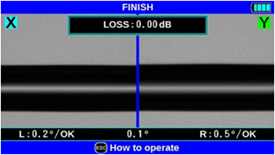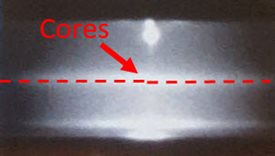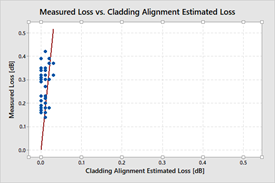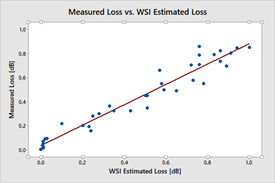BLOG
Splice Loss Estimation with the Fujikura 41S fusion splicer
05-27-2019
Splice Loss Estimation is the process used within the splicer to gauge the amount of optical power lost at the splice joint due to core misalignment. This is accomplished by analyzing the profile image of the fused fiber and is typically common knowledge for fiber optic technicians in today’s industry. However, there is often a lack of clarity regarding the differing splice loss estimation methods. Not all splicers use the same estimation technique, nor do they possess the same level of accuracy or precision. This blog focuses on the Fujikura 41S fusion splicer and its loss estimation advantage compared to other cladding alignment splicers.
Traditionally, field splicers have utilized only cold images for loss estimation, and as a result, splice loss evaluation was much simpler: core alignment estimation or cladding alignment estimation. The 41S uses warm splice images to gain an edge against the competition. Warm splice images have been utilized by Fujikura “factory” model splicers for many years to accurately predict splice loss on exotic fiber types. Warm splice images take advantage of the fact that fiber cores glow brighter than the surrounding cladding during heating. This difference in brightness causes the fiber core to be distinguishable from the cladding during the fusion process. The cold splice image next to a warm splice image below helps explain this phenomenon:


Cold Splice Image Warm Splice Image
Fujikura, once again, is leading the charge in innovation by introducing warm splice image loss estimation in the active cladding alignment splicer model 41S. The reason for this introduction is cladding alignment splicers, both active and fixed v-groove, have lower grade optical systems than core alignment type models, and therefore are not able to estimate splice loss as accurately using the cold splice image. With the addition of warm image estimation, the active cladding alignment 41S, with a lower grade optical system, has a loss estimation capability unmatched by any other cladding alignment splicer in the industry.
The splice loss data below was gathered during a general study to assess the performance improvement of the 41S loss estimation with warm splice images compared to standard cladding alignment estimations using only cold splice images. These two splice loss data sets were acquired with the 41S splicer for standard single mode splices containing various loss attributing factors. As you can see, the measured versus estimated losses using cold splice images are extremely inaccurate. Every estimate is less than 0.03dB even when measured losses are greater than 0.40dB. The measured vs. estimated losses when using warm splice images trend in the ideal direction for a wide range of loss values.


In conclusion, the relevance and benefit of splice loss estimation in active cladding alignment splicers is changing with Fujikura’s implementation of warm image estimation in the 41S. This increased estimation accuracy gives operators a better tool to gauge the quality of their splice before wasting time testing and performing splicing rework. Whereas before it was a mystery as to what your actual splice loss would be with an active cladding alignment splicer, you now have confidence that an estimated low loss splice is in fact a low loss splice.
Read the white paper for a more in-depth review of the splice loss estimation study mentioned above.
Read the white paper for a more in-depth review of the splice loss estimation study mentioned above.